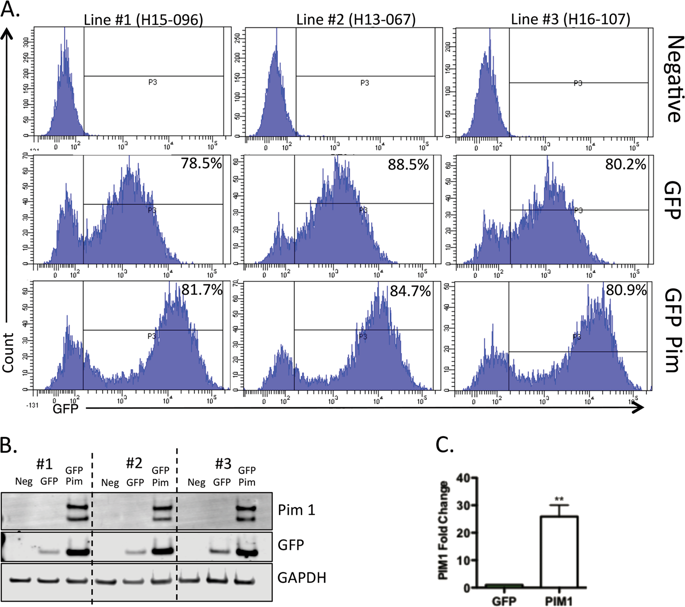当前位置:
X-MOL 学术
›
Gene Ther.
›
论文详情
Our official English website, www.x-mol.net, welcomes your feedback! (Note: you will need to create a separate account there.)
Safety profiling of genetically engineered Pim-1 kinase overexpression for oncogenicity risk in human c-kit+ cardiac interstitial cells.
Gene Therapy ( IF 5.1 ) Pub Date : 2019-06-25 , DOI: 10.1038/s41434-019-0084-5 Kathleen Broughton 1, 2 , Kelli Korski 1, 2 , Oscar Echeagaray 1 , Robert Adamson 3 , Walter Dembitsky 3 , Zhibing Lu 4 , Erik Schaefer 4 , Mark A Sussman 1, 2
Gene Therapy ( IF 5.1 ) Pub Date : 2019-06-25 , DOI: 10.1038/s41434-019-0084-5 Kathleen Broughton 1, 2 , Kelli Korski 1, 2 , Oscar Echeagaray 1 , Robert Adamson 3 , Walter Dembitsky 3 , Zhibing Lu 4 , Erik Schaefer 4 , Mark A Sussman 1, 2
Affiliation

|
Advancement of stem cell-based treatment will involve next-generation approaches to enhance therapeutic efficacy which is often modest, particularly in the context of myocardial regenerative therapy. Our group has previously demonstrated the beneficial effect of genetic modification of cardiac stem cells with Pim-1 kinase overexpression to rejuvenate aged cells as well as potentiate myocardial repair. Despite these encouraging findings, concerns were raised regarding potential for oncogenic risk associated with Pim-1 kinase overexpression. Testing of Pim-1 engineered c-kit+ cardiac interstitial cells (cCIC) derived from heart failure patient samples for indices of oncogenic risk was undertaken using multiple assessments including soft agar colony formation, micronucleation, gamma-Histone 2AX foci, and transcriptome profiling. Collectively, findings demonstrate comparable phenotypic and biological properties of cCIC following Pim-1 overexpression compared with using baseline control cells with no evidence for oncogenic phenotype. Using a highly selective and continuous sensor for quantitative assessment of PIM1 kinase activity revealed a sevenfold increase in Pim-1 engineered vs. control cells. Kinase activity profiling using a panel of sensors for other kinases demonstrates elevation of IKKs), AKT/SGK, CDK1-3, p38, and ERK1/2 in addition to Pim-1 consistent with heightened kinase activity correlating with Pim-1 overexpression that may contribute to Pim-1-mediated effects. Enhancement of cellular survival, proliferation, and other beneficial properties to augment stem cell-mediated repair without oncogenic risk is a feasible, logical, and safe approach to improve efficacy and overcome current limitations inherent to cellular adoptive transfer therapeutic interventions.
中文翻译:

基因工程 Pim-1 激酶过表达对人 c-kit+ 心脏间质细胞致癌风险的安全分析。
基于干细胞的治疗的进步将涉及提高治疗功效的下一代方法,这通常是适度的,特别是在心肌再生治疗的背景下。我们的小组之前已经证明了对心脏干细胞进行基因修饰与 Pim-1 激酶过表达的有益效果,以恢复衰老细胞并加强心肌修复。尽管有这些令人鼓舞的发现,但人们对与 Pim-1 激酶过度表达相关的潜在致癌风险提出了担忧。使用多种评估(包括软琼脂集落形成、微核化、γ-组蛋白 2AX 病灶和转录组分析)对源自心力衰竭患者样本的 Pim-1 工程化 c-kit+ 心脏间质细胞 (cCIC) 进行致癌风险指数的测试。总的来说,研究结果表明,与使用没有致癌表型证据的基线对照细胞相比,Pim-1 过表达后 cCIC 的表型和生物学特性具有可比性。使用高选择性和连续传感器对 PIM1 激酶活性进行定量评估显示 Pim-1 工程细胞与对照细胞相比增加了七倍。使用一组传感器检测其他激酶的激酶活性分析表明,除了 Pim-1 外,IKKs)、AKT/SGK、CDK1-3、p38 和 ERK1/2 的升高与与 Pim-1 过表达相关的激酶活性升高一致,这可能会导致有助于 Pim-1 介导的效应。增强细胞存活、增殖和其他有益特性以增强干细胞介导的修复而没有致癌风险是可行的、合乎逻辑的、
更新日期:2019-11-18
中文翻译:

基因工程 Pim-1 激酶过表达对人 c-kit+ 心脏间质细胞致癌风险的安全分析。
基于干细胞的治疗的进步将涉及提高治疗功效的下一代方法,这通常是适度的,特别是在心肌再生治疗的背景下。我们的小组之前已经证明了对心脏干细胞进行基因修饰与 Pim-1 激酶过表达的有益效果,以恢复衰老细胞并加强心肌修复。尽管有这些令人鼓舞的发现,但人们对与 Pim-1 激酶过度表达相关的潜在致癌风险提出了担忧。使用多种评估(包括软琼脂集落形成、微核化、γ-组蛋白 2AX 病灶和转录组分析)对源自心力衰竭患者样本的 Pim-1 工程化 c-kit+ 心脏间质细胞 (cCIC) 进行致癌风险指数的测试。总的来说,研究结果表明,与使用没有致癌表型证据的基线对照细胞相比,Pim-1 过表达后 cCIC 的表型和生物学特性具有可比性。使用高选择性和连续传感器对 PIM1 激酶活性进行定量评估显示 Pim-1 工程细胞与对照细胞相比增加了七倍。使用一组传感器检测其他激酶的激酶活性分析表明,除了 Pim-1 外,IKKs)、AKT/SGK、CDK1-3、p38 和 ERK1/2 的升高与与 Pim-1 过表达相关的激酶活性升高一致,这可能会导致有助于 Pim-1 介导的效应。增强细胞存活、增殖和其他有益特性以增强干细胞介导的修复而没有致癌风险是可行的、合乎逻辑的、



























 京公网安备 11010802027423号
京公网安备 11010802027423号